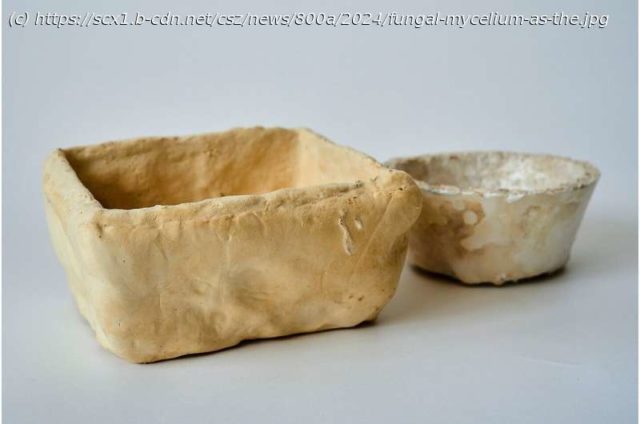Fungi have more to offer than meets the eye. Their thread-like cells, which grow extensively and out of sight underground like a network of roots, offer huge potential for producing sustainable, biodegradable materials. Researchers at the Fraunhofer Institute for Applied Polymer Research IAP in Potsdam Science Park are using this mycelium to develop a wide range of recyclable products, from wallets and insulation to packaging.
Fungi have more to offer than meets the eye. Their thread-like cells, which grow extensively and out of sight underground like a network of roots, offer huge potential for producing sustainable, biodegradable materials. Researchers at the Fraunhofer Institute for Applied Polymer Research IAP in Potsdam Science Park are using this mycelium to develop a wide range of recyclable products, from wallets and insulation to packaging.
To most of us, fungi look like a curved cap and a stem. However, the largest part of the organism consists of a network of cell filaments called mycelium, which mainly spreads below ground and can reach significant proportions. This finely branched network has been underutilized until now. However, for researchers at the Fraunhofer Institute for Applied Polymer Research IAP in Potsdam, mycelium represents a pioneering raw material with the potential to replace petroleum-based products with natural, organic mycelium composites.
Organic residues from regional agricultural and forestry activities are used as the substrate for the fungal cultures. In various projects, the researchers are using mycelium-based materials to produce insulation, packaging, and animal-free alternatives to leather products.
“Faced with climate change and dwindling fossil raw materials, there is an urgent need for biodegradable materials that can be produced with lower energy consumption”, says Dr. Hannes Hinneburg, a biotechnologist at Fraunhofer IAP. Together with his team, he is using mycelium—for instance, from edible mushrooms or bracket fungi such as the oyster mushroom or tinder fungus—to transform locally available plant residues into sustainable materials.
“The mycelium has properties that can be used to produce environmentally friendly, energy-efficient materials, since the growth of the fungi takes place under ambient conditions and CO2 remains stored in the residues.






